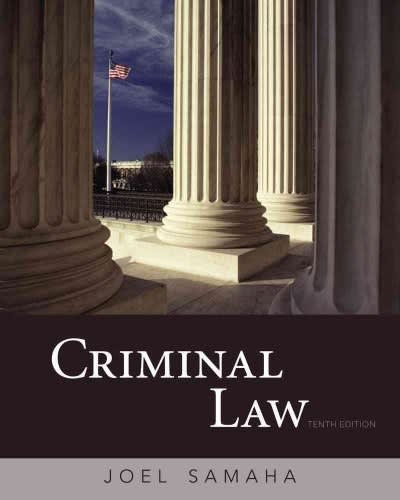Accounting firm was convicted in the U.S. District Court for the Southern District of Texas, Melinda Harmon,
Question:
Accounting firm was convicted in the U.S. District Court for the Southern District of Texas, Melinda Harmon, J., of obstructing Securities and Exchange Commission (SEC) proceeding, and it appealed. The U.S. Court of Appeals 5th Circuit, Texas, affirmed.
REAVLEY, HIGGINBOTHAM and BENAVIDES, JJ., PATRICK E. HIGGINBOTHAM, J.
Today we decide one of the many cases arising from the rubble of Enron Corporation, which fell from its lofty corporate perch in 2001 wreaking financial ruin upon thousands of investors, creditors, and employees. Like a falling giant redwood, it took down with it many members of its supporting cast. Our present focus is upon one of those, Arthur Andersen, LLP, then one of the largest accounting and consulting firms in the world. The indictment leading to the conviction charged Andersen of corruptly persuading one or more Andersen personnel to withhold, alter, destroy, or conceal documents with the intent to impair their availability in an official proceeding. Writ large, the government says that Andersen, in an effort to protect itself and its largest single account, ordered a mass destruction of documents to keep them from the hands of the SEC.
During the 1990s, Enron transformed itself from a natural gas pipeline operator into a trading and investment conglomerate with a large volume of trading in the energy business. Andersen both audited Enron’s publicly filed financial statements and provided internal audit and consulting services. By the late 1990s, Andersen’s “engagement team” for its Enron account included more than 100 people, a significant number of which worked exclusively in Enron quarters in Houston, Texas.
From 1997 through 2001, the engagement team’s leader was David Duncan. He was in turn subject to certain managing partners and accounting experts in Andersen’s Chicago office. Enron was a valued client producing $58 million in revenue in 2000 for Andersen with projections of $100 million for the next year. Enron’s chief accounting officer and treasurer throughout this period came to the employ of Enron from the accounting staffs of Andersen, as did dozens of others. This was a close relationship. Indeed, the jury heard evidence that Andersen removed at Enron’s request at least one accountant from his assignment with Enron after Enron disagreed with his accounting advice.
QUESTIONS
1. Describe the relationship between Arthur Andersen and Enron.
2. State exactly what about the relationship gave rise to Anderson’s crime and its ultimate “death.”
3. State the mens rea required to impute Anderson employees’ acts to Arthur Andersen, LLC.
4. Is Arthur Andersen, LLC a criminal? If so, what should the punishment be?
Step by Step Answer:






